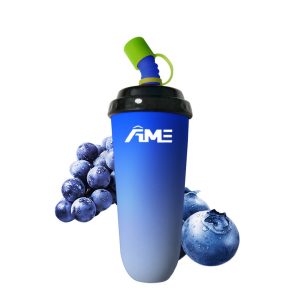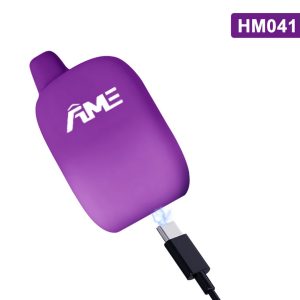YOUR CART
- No products in the cart.
Subtotal:
$0.00
BEST SELLING PRODUCTS

In recent years, concerns about the health risks associated with vaping have led many individuals to seek out safer alternatives. As a vape manufacturer factory, it’s crucial to address these concerns and provide consumers with viable options. While vaping has been marketed as a less harmful alternative to smoking traditional cigarettes, questions remain about its long-term effects on health. So, is there a truly healthy alternative to vaping?
The quest for a healthier alternative to vaping stems from the desire to enjoy the act of inhaling substances without exposing oneself to potential harm. While vaping eliminates many of the harmful chemicals found in traditional cigarettes, it still involves the inhalation of various substances, including nicotine and flavorings, which may have their own associated risks.
Fortunately, there are alternatives available that aim to provide a safer vaping experience. One such option is bulk disposable vapes, which offer a convenient and discreet way to enjoy vaping without the need for refills or recharging. These disposable devices are designed to be used once and then discarded, reducing the risk of exposure to harmful chemicals over time.
Another alternative to traditional vaping is the use of vape pods, which are small, pre-filled cartridges that attach to a battery-powered device. These pods typically contain a lower concentration of nicotine than traditional e-liquids, making them a potentially safer option for those looking to reduce their nicotine intake.

As the search for safer alternatives to vaping continues, it’s essential to consider the safety of different inhalation methods.
When it comes to smoking or vaping, there is no completely risk-free option. However, some methods may pose fewer risks than others. For example, smoking traditional cigarettes exposes users to a wide range of harmful chemicals, including tar and carbon monoxide, which can increase the risk of various health issues, including cancer and heart disease.
In contrast, vaping eliminates many of the harmful chemicals found in traditional cigarettes, as the process involves heating a liquid to produce vapor rather than burning tobacco. However, concerns remain about the safety of certain ingredients used in e-liquids, such as nicotine and flavorings, as well as the potential long-term effects of inhaling vaporized substances.
When comparing the risks of smoking, vaping, and other alternatives, it’s essential to consider factors such as the composition of the substances being inhaled, the method of delivery, and the potential long-term effects on health.
While smoking traditional cigarettes remains the most harmful option due to the presence of numerous toxic chemicals and carcinogens, vaping offers a potentially less harmful alternative for those seeking to reduce their exposure to harmful substances. However, the safety of vaping ultimately depends on the quality of the products being used and the ingredients contained within them.
In recent years, interest has grown in exploring alternative inhalation methods that minimize the risks associated with vaping. For example, some individuals have turned to CBD vape products, which contain cannabidiol (CBD) derived from hemp plants rather than nicotine. CBD has been touted for its potential health benefits, including its anti-inflammatory and analgesic properties, making it an appealing option for those looking to support their well-being without the risks associated with nicotine.

As discussions about nicotine continue, it’s essential to understand the different forms in which it can be consumed and their potential impact on health.
Nicotine can be derived from both natural and synthetic sources. Natural nicotine is extracted from tobacco plants and is the most common form found in traditional cigarettes and many vaping products. Synthetic nicotine, on the other hand, is produced in a laboratory setting and is chemically identical to natural nicotine.
While both natural and synthetic nicotine have the same molecular structure, some argue that synthetic nicotine may offer a safer alternative due to its purity and lack of contaminants. However, more research is needed to fully understand the potential differences in safety between the two forms.
In addition to the source of nicotine, the delivery system used to administer it can also impact its potential health effects. Traditional cigarettes deliver nicotine through the combustion of tobacco, which produces harmful byproducts such as tar and carbon monoxide.
Vaping, on the other hand, delivers nicotine through the vaporization of a liquid solution containing nicotine and other ingredients. While vaping eliminates many of the harmful chemicals found in traditional cigarettes, concerns remain about the safety of certain ingredients used in e-liquids, as well as the potential long-term effects of inhaling vaporized substances.

As interest in vaping grows, so does the demand for products that cater to a variety of preferences, including those who wish to enjoy vaping without nicotine.
Zero nicotine vape liquids, also known as nicotine-free e-liquids, are formulated without the addition of nicotine. Instead, they typically contain a base of propylene glycol (PG) and vegetable glycerin (VG), along with flavorings. These ingredients are vaporized when heated by a vaping device, creating the inhalable vapor that users enjoy.
One of the primary appeals of zero nicotine vape liquids is that they provide a similar sensory experience to traditional vaping without the addictive effects of nicotine. This makes them an attractive option for individuals who have successfully quit smoking or are looking to gradually reduce their nicotine intake.
While zero nicotine vape liquids eliminate the risks associated with nicotine addiction, questions remain about the safety of other ingredients found in e-liquids, such as flavorings and bulk vape juice
Propylene glycol and vegetable glycerin, the primary components of e-liquid bases, are generally recognized as safe for human consumption by regulatory agencies such as the U.S. Food and Drug Administration (FDA) when used in food and pharmaceutical products. However, their safety when heated and inhaled over the long term is still being studied.
Flavorings present another potential area of concern, as some may contain additives or compounds that could pose health risks when inhaled. Diacetyl, for example, is a flavoring compound commonly used to impart a buttery flavor to e-liquids but has been linked to respiratory issues when inhaled in large quantities. As a vape manufacturer factory, it’s essential to prioritize the use of flavorings that have been tested and deemed safe for inhalation.

In response to growing concerns about the safety of certain flavoring compounds, including diacetyl, many vape manufacturers have sought out diacetyl-free alternatives for their products.
Diacetyl is a chemical compound commonly used in flavorings to impart a rich, buttery taste to e-liquids. While diacetyl is generally recognized as safe for ingestion, concerns have arisen about its safety when inhaled.
Research has shown that inhaling diacetyl vapor can lead to a condition known as “popcorn lung” or bronchiolitis obliterans, a severe and irreversible lung disease characterized by inflammation and scarring of the airways. This condition gained notoriety after a cluster of cases were reported among workers in microwave popcorn factories who were exposed to high levels of diacetyl.
In response to these concerns, many vape manufacturers have reformulated their products to eliminate diacetyl and other potentially harmful compounds from their flavorings. Instead, they have turned to alternative flavoring agents that provide a similar taste without the associated risks.
One such alternative is acetyl propionyl, which is chemically similar to diacetyl but is believed to pose fewer risks to respiratory health. However, more research is needed to fully understand the long-term effects of inhaling acetyl propionyl vapor.
Another approach taken by vape manufacturers is to use natural flavorings derived from fruits, herbs, and spices. These natural flavorings not only offer a safer alternative to synthetic additives but also provide a more authentic and complex flavor profile.
By prioritizing the use of diacetyl-free flavorings in their products, vape manufacturers can help ensure the safety and well-being of their customers while still providing a satisfying vaping experience.